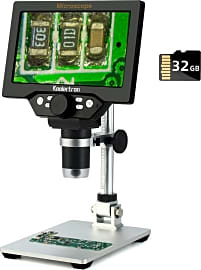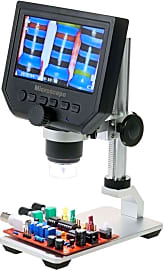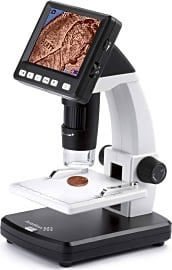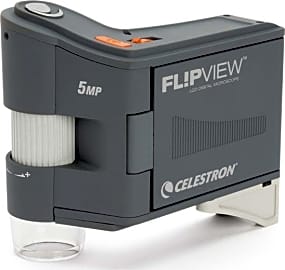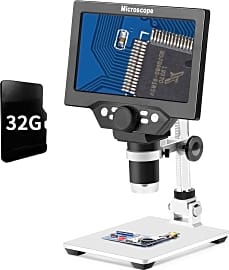The 9 Best LCD Microscopes

This wiki has been updated 29 times since it was first published in November of 2018. Microscopes sure have come a long way from the basic ones many of us used as kids in science class. Thanks to today’s LCD models, students, scientists, and technicians can save themselves eyestrain when they examine the wonders of the unseen world on larger screens. Our selection includes options for everyone, ranked by factors like display size, resolution, and ease of use. When users buy our independently chosen editorial recommendations, we may earn commissions to help fund the Wiki.
Editor's Notes
February 19, 2021:
I’ve had to update most of the models in this list, as many are/were overpriced for the current market, and have much smaller screens than those of today’s standard. Many microscopes currently in this list now have screens of around 7 inches, and the vast majority will be able to connect to your computer too. Do note that in some cases, you may get a better picture on the computer, as the camera’s resolution may be higher than the LCD’s. One model I have decided to keep despite it not having great specs is the Celestron FlipView Handheld, and the reason is because it’s a pocket model, and so is very easy to carry around compared to some of the other microscopes here. I’ve also kept the Ivation Portable for its measurement and plotting software, and its small screen can be overlooked in light of the fact that you can simply plug it into the computer.
Your choice of which type of microscope to use will depend on your particular circumstances. While both USB microscopes and LCD microscopes are virtually the same – that is, they’re both digital microscopes – USB microscopes tend to run on power directly from a computer’s USB port, and also – obviously – don’t’ have an LCD display. By contrast, LCD microscopes charge their battery via a USB port, and display on an LCD as well as externally on a computer screen, most of the time. Obviously, digital microscopes can be convenient in many ways, and avoid the issue of eyestrain, though a good old optical microscope also has its advantages; it doesn’t need electrical power to function, and it produces a real image. Do note that there are also multiple types of optical microscopes, like inverted and compound microscopes, which have different lens structures.
November 21, 2018:
Included some options well suited for outdoor exploration as well as others geared more toward laboratory work or PCB soldering. As such, some of these certainly resemble traditional microscopes more than others, yet they all have 2.4” or larger LCD screens.


